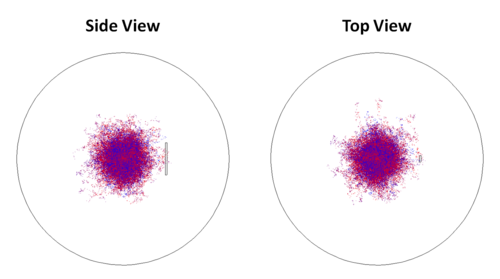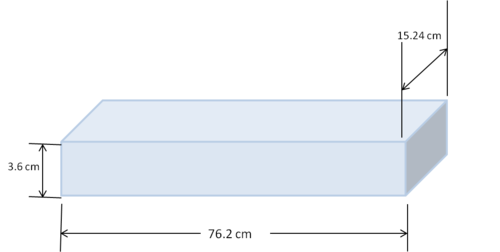Difference between revisions of "2-Neutron Correlation"
Jump to navigation
Jump to search
| Line 28: | Line 28: | ||
; Now, what neutron singles rate into the detector should correspond to 1 fission per pulse? | ; Now, what neutron singles rate into the detector should correspond to 1 fission per pulse? | ||
| − | * If we have 1 fission per pulse and each fission | + | * If we have 1 fission per pulse and each fission emits on average 2.3 neutrons, we should expect 2.3 neutrons/pulse |
* The number of neutrons hitting the detector per pulse is found as <math>2.3*\frac{\Delta \Omega}{4\pi}</math> | * The number of neutrons hitting the detector per pulse is found as <math>2.3*\frac{\Delta \Omega}{4\pi}</math> | ||
* The number detected per pulse can be found as <math>2.3*\frac{\Delta \Omega}{4\pi}*\epsilon_0</math> | * The number detected per pulse can be found as <math>2.3*\frac{\Delta \Omega}{4\pi}*\epsilon_0</math> | ||
Revision as of 21:14, 29 May 2012
Big Detector Solid Angle Calculations
- MCNPX Simulation
- 14 MeV neutron source, emitted isotropically ()
- Detector placed 1m away from source
- face of the detector is 15.24cm x 76.2cm, and 3.6cm deep
The solid angle can be found from the number of particles hitting the detector as:
- Results
- Out of 1E9 neutrons generated, 8618287 neutrons hit the detector
-
- if the detector is placed 70cm away from the source,
-
- As a test to verify our results
- We change the detector size to 2cm by 2cm and used 1E9 neutrons again
- 32061 neutrons struck the detector
- And, as a second test to verify our results
- We change the detector size to 1cm by 1cm and used 1E9 neutrons again
- 7965 neutrons struck the detector
- Now, what neutron singles rate into the detector should correspond to 1 fission per pulse?
- If we have 1 fission per pulse and each fission emits on average 2.3 neutrons, we should expect 2.3 neutrons/pulse
- The number of neutrons hitting the detector per pulse is found as
- The number detected per pulse can be found as
- where is the detector efficiency

